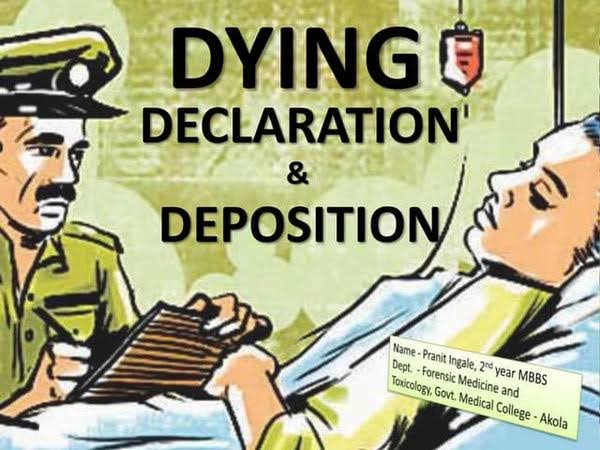S.P. Garg, J.@mdashKamla Devi and her father Akbar were arrested and charge-sheeted for committing the murder of Kanwar Pal Singh on the night intervening 16/17.11.1986 at Shastri Park, opposite C-Block within the jurisdiction of police station Seelampur. The Trial Court by the impugned judgment dated 29.04.1998 acquitted Akbar of the charges and convicted Kamla for committing the offence punishable u/s 302/34 IPC and sentenced her to undergo imprisonment for life with fine of `2000/- by order on sentence dated 30.04.1998. The prosecution alleged that the deceased (Kanwar Pal Singh) and Kamla (accused) had illicit relations and used to live together at Gulabi Bagh, Delhi. In November 1985, the wife and children of deceased went to stay with him at Delhi. Thereafter, the deceased and his family started living in a rented house at Kartar Nagar. The accused did not like his rejection of her and hatched a conspiracy to murder him.
2. The deceased used to work in a liquor shop at Shakarpur. On 16.11.1986, at noon time the accused reached his office and picked a quarrel with him. The deceased pacified her and promised to return in the evening to her at Gulabi Bagh. The deceased participated in a social function at R.K. Sharma''s residence in the evening and from there left for Gulabi Bagh with his colleague Devender Kumar (PW-11). On 17.11.1986, when he did not report for duty at the liquor shop, R.K. Sharma (PW-10) went to the house of the accused and inquired about Kunwar Pal Singh. When he did not get any satisfactory answer, he reported the matter to the higher authorities.
3. On 18.11.1986, at about 10.00 A.M. the deceased''s body was found in a gunny bag at Nai Sarak, opposite C-Block, Shastri Park, Seelampu. Daily Diary (DD) entry No. 2-A (Ex.PW-13/A) was recorded at PS Seelampur, Delhi in this regard and the investigation was assigned to SI Raj Kumar who reached the spot and conducted the necessary proceedings. He sent the body for post-mortem. Dr. L.T. Ramani conducted the post-mortem. On 05.12.1986, Rajeshwar and Mahipal Singh (deceased''s brothers) visited the deceased''s office and were informed that he (K.P. Singh) had not reported for duty since 17.11.1986. On 06.12.1986, they visited the police station Seelampur and on seeing the photos, came to know about his death. The accused Kamla was arrested on 12.12.1986 and pursuant to her disclosure statement, the police recovered at her instance the weapon of offence i.e. Saria; deceased''s clothes and keys. On 19.01.1987, the accused Akbar was arrested and interrogated. After completion of the investigation both the accused were charge-sheeted and brought to trial.
4. To prove the charges, the prosecution examined twenty nine witnesses. In their statements u/s 313 Cr.P.C., they denied complicity in the crime and pleaded false implication. After appreciation of the evidence and after considering rival contentions of the parties, the Trial Court convicted the accused (Kamla) for committing the offence u/s 302 IPC and acquitted her father co-accused (Akbar Singh).
5. We have heard learned counsel for the parties and have considered the Trial Court records. The entire case of the prosecution is based upon circumstantial evidence. The prosecution mainly relied upon the circumstance of last seen; motive and recovery of incriminating articles to establish the guilt of the accused.
6. In a case based upon circumstantial evidence, motive assumes greater importance. The motive alleged in the case is that the accused and the deceased were in a live-in relationship and when the deceased started living separate from her and joined his family, she became agitated and planned to kill him. The prosecution, however, did not examine any witness to prove if both were in live-in relationship and if so, since when. PW-16 Dalbir Singh''s narration on this aspect has no evidentiary value as his knowledge is based upon the information given by his sister who was not examined during trial. No other witness testified that they both used to live together. No complaint was ever lodged by the deceased''s family objecting to the alleged illicit relations with the accused. It is unbelievable that accused''s father would encourage any such relation. It is also unclear whether the deceased resided with his family at Delhi for any duration. PW-3 (Rajbir), owner of the premises in Kartar Nagar did not depose that the deceased had stayed with his wife and children in his house. He merely stated that he had resided for a month in his house and thereafter, left for Faridabad. He was declared hostile and was cross-examined by learned APP after Court''s permission. The witness denied the contents of the statement Ex.PW-3/DA made to the police. It is uncertain if the accused ever objected to the deceased''s living with his family at Delhi or she picked up any quarrel with him at that time and insisted him to join her. The prosecution did not examine any family members of the deceased to prove her behaviour and conduct during their stay in Delhi. The prosecution thus, failed to produce credible and clinching evidence to prove motive.
7. The prosecution claimed that the accused had visited the deceased''s office on 16.11.1986 and picked up a quarrel with him to force him to return to her. PW-10 (R.K. Sharma) merely deposed about Kamla''s visit to the office that day. PW-11 (Devender Kumar) also deposed about Kamla''s visit to the office that day but he denied if there had been any verbal duel between them or the deceased had promised to return to her residence at Gulabi Bagh in the evening. They were never seen together thereafter. Undisputedly, the deceased with PW-11 had attended the function at the R.K. Sharma''s residence in the evening. After the function was over, he (PW-10) came at the bus stop, Shahdara, to see them off, and the deceased took the bus to go to Koria Bridge. There is no evidence on record to show that the deceased had informed him that he was going to Gulabi Bagh at the residence of the accused. When PW-10 (R.K. Sharma) visited the accused''s home on 17.11.1986 to enquire about the deceased, she was present there and informed him that the deceased had not visited her. The body of the deceased was recovered on 18.11.1986 at 10.00 A.M. There was a long gap between the time when the accused was allegedly seen with the deceased on 16.11.1986 at noon and when the death occurred. Again it is uncertain if he actually visited the accused at her residence or went to his family at Kartar Nagar. No missing report was lodged by his family members. The investigation is silent as to when the wife and children left Delhi to go to their native.
8. Mere presence of accused with the deceased itself cannot be taken as a strong incriminating circumstance to connect her with the commission of offence. Regarding law on the circumstance of last seen, the observation of Supreme Court in
The circumstance of last seen together does not by itself and necessarily lead to the inference that it was the accused who committed the crime. There must be something more establishing connectivity between the accused and the crime. There may be cases where, on account of close proximity of place and time between the event of the accused having been last seen with the deceased and the factum of death, a rational mind may be persuaded to reach an irresistible conclusion that either the accused should explain how and in what circumstances the victim suffered the death or should own the liability for the homicide. In the present case there is no such proximity of time and place.
9. In
The last seen theory comes into play where the time gap between the point of time when the accused and the deceased were seen last alive and when the deceased is found dead is so small that possibility of any person other than the accused being the author of the crime becomes impossible. It would be difficult in some cases to positively establish that the deceased was last seen with the accused when there is a long gap and possibility of other persons coming in between exists. In the absence of any other positive evidence to conclude that the accused and the deceased were last seen together, it would be hazardous to come to a conclusion of guilt in those cases.
32. In
10. The prosecution has thus failed to establish that the deceased was seen alive in the company of the accused or her father in close proximity of time and place.
11. The deceased''s brothers were unaware about his disappearance and absence from duties since 17.11.1986. Only on 06.12.1986, upon identification of photographs shown to them by the police, they came to know about his death. Prior to that, the police had no clue who was the perpetrator of the crime. The police apprehended the accused on 12.12.1986. The recoveries of the weapon i.e ''saria'' and the ''clothes'' are inconsequential as no independent public witness was associated despite availability. It is not believable that the accused would conceal the ''saria'' of insignificant value in her house. Moreover, since the blood group of the deceased was not found on the ''saria'', it cannot be inferred that it was used as a crime weapon. PW-4 (Tanuja) did not support the prosecution and turned hostile and she categorically denied recovery of any article in her presence. The prosecution did not prove where the deceased was done to death, how and in what manner his body was thrown at the spot.
12. The above discussion reveals that the prosecution failed to prove any strong incriminating circumstance against the accused Kamla to support a conviction for the offence u/s 302 IPC. The impugned judgment is based upon surmises and conjectures. Suspicion, however, strong cannot take the place of proof. On the same set of evidence the prosecution failed to establish the guilt against co-accused Akbar and it resulted in his acquittal.
13. It is well settled that when a case rests purely on circumstantial evidence, such evidence must satisfy three tests. Firstly, the circumstances from which an inference of guilt is sought to be proved, must be cogently and firmly established. Secondly, the circumstances should be of a definite tendency unerringly pointing towards the guilt of the accused. Thirdly, the circumstances taken cumulatively ,must form a chain so complete that there is no escape from the conclusion that within all human probability the crime was committed by the accused and none else.
14. In the light of the above discussion, we are of the considered view that the prosecution has failed to satisfy the above tests and thus, the impugned judgment cannot be sustained and is set aside. The appeal is allowed. Trial court record be sent back forthwith.

